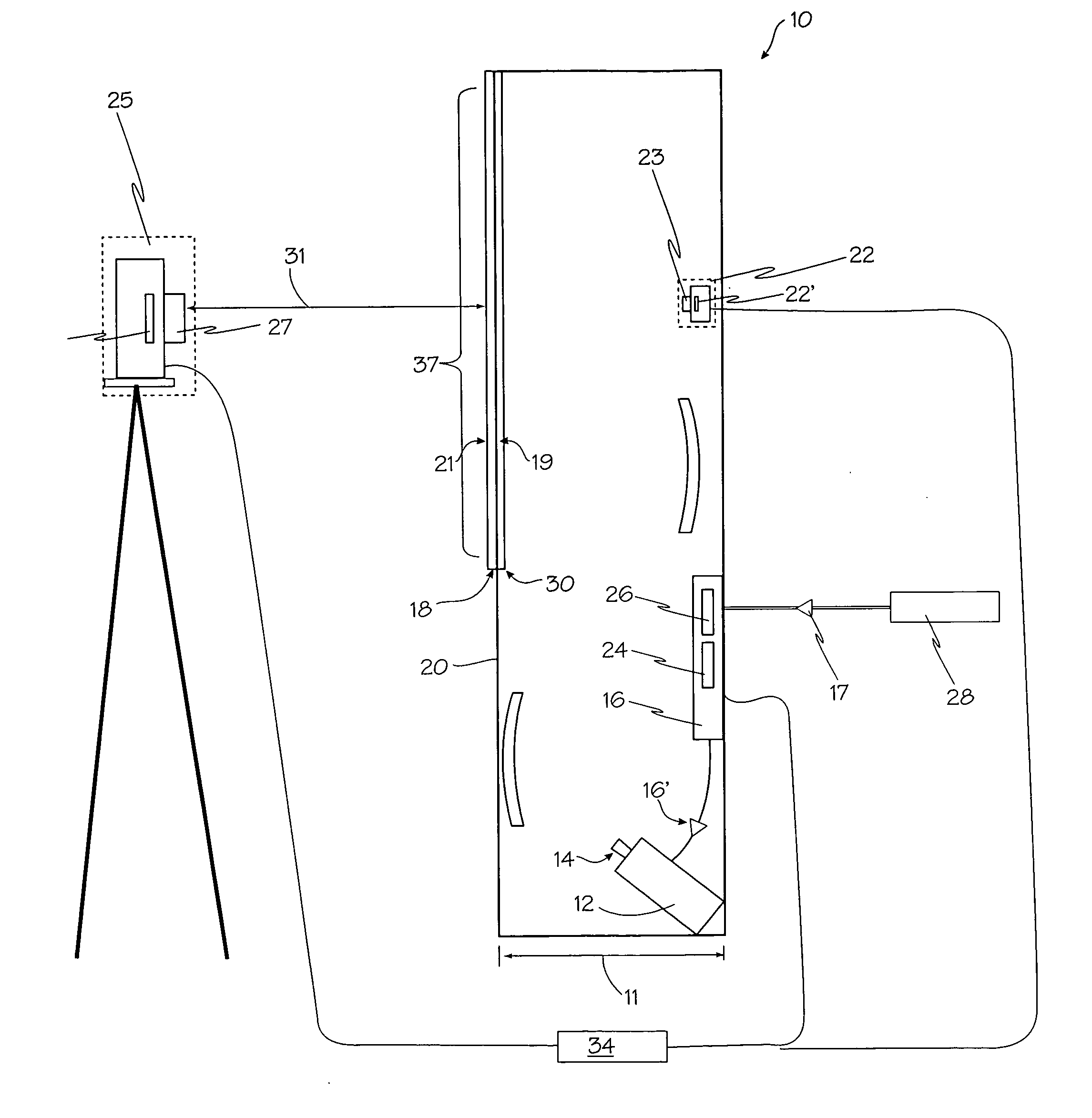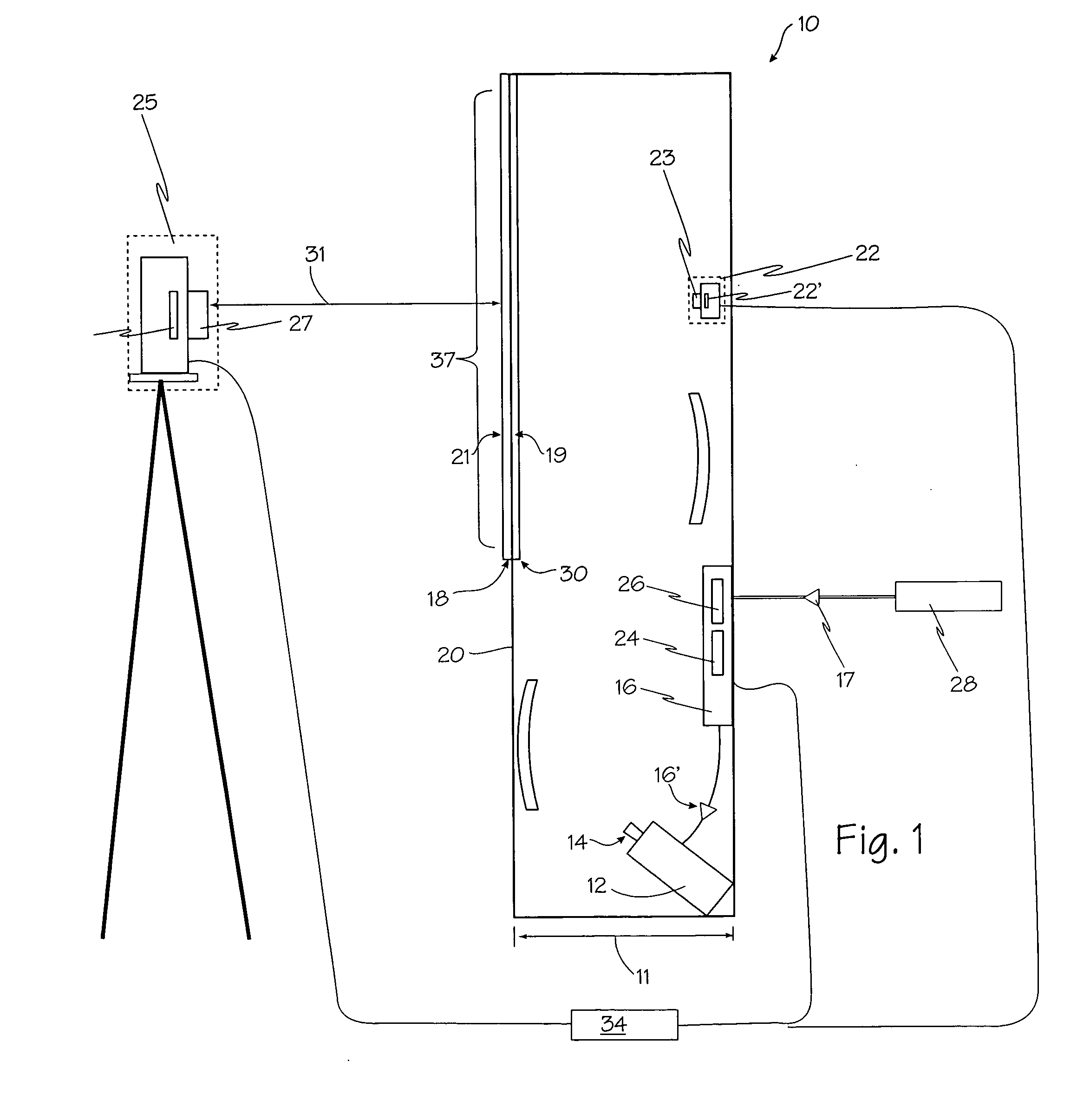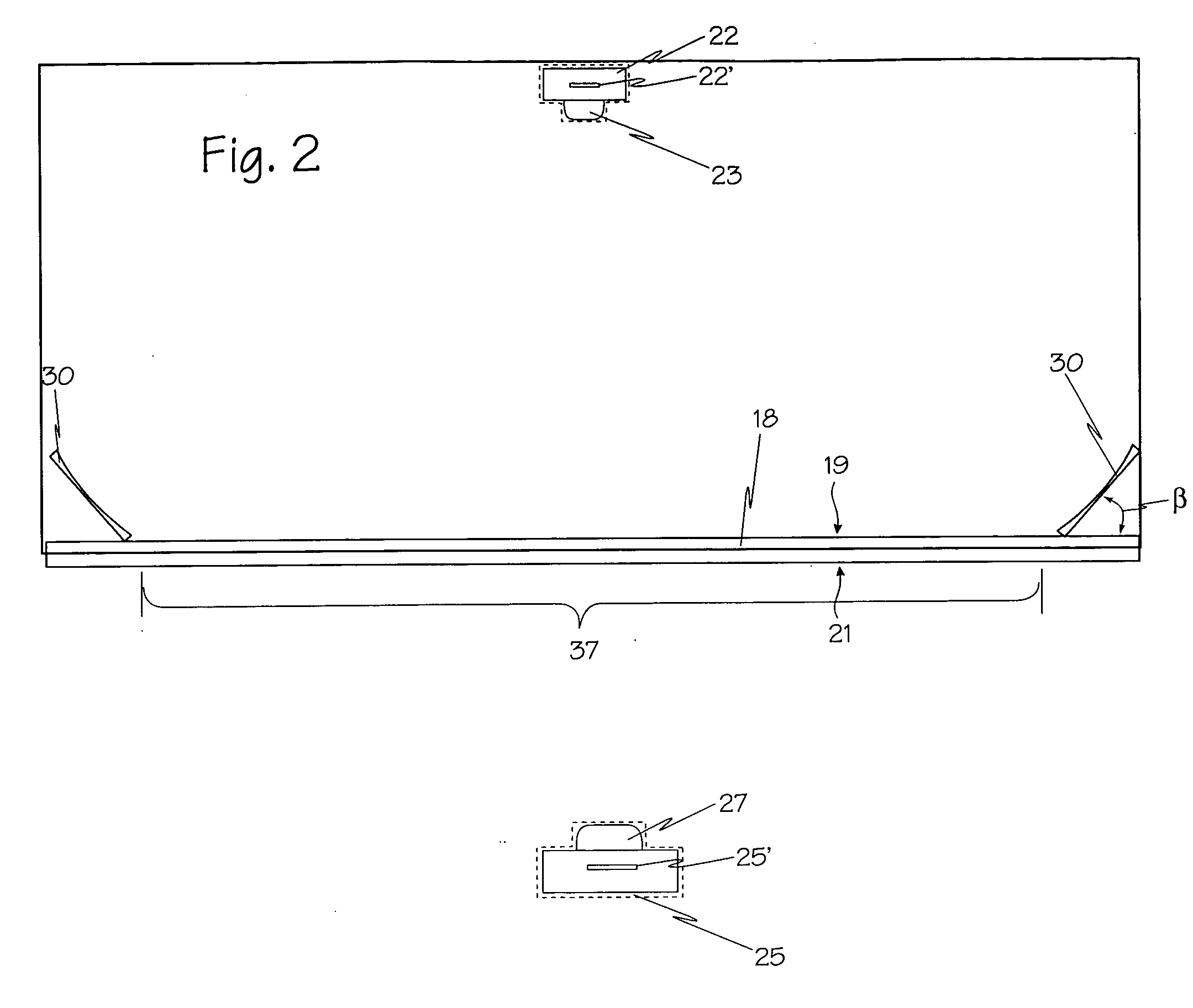Dual camera calibration technique for video projection systems
a video projection and calibration technology, applied in the field of video projection, can solve the problems of low resolution, low cost, and general use of expensive optics, and achieve the effect of low resolution and low cos
- Summary
- Abstract
- Description
- Claims
- Application Information
AI Technical Summary
Benefits of technology
Problems solved by technology
Method used
Image
Examples
Embodiment Construction
[0021] With reference to FIGS. 1 and 2, rear projection monitor 10 includes projector 12, projection optics 14, control system 16, viewing screen 18, cabinet 20 and low resolution camera 22. Rear projection monitor 10 is of a thin type, meaning that the depth of cabinet 20, represented by distance 11 may be less than fourteen inches. Rear projection monitor 10 may be used, for example, as a television, a home cinema, or the like. Projector 12 is generally mounted below the center horizontal axis of viewing screen 18 and projects upwards, off-axis. Any other suitable orientation of projector 12 may be used. Projector 12 is setup to receive signals from control system 16. The illustrated projector may incorporate a single microdisplay projector for use in a rear projection imaging system and thus may use a transmissive liquid crystal display (LCD) imager, a digital micromirror devices (DMD) imager, or a liquid crystal on silicon (LCOS) imager.
[0022] The microdisplay imager in project...
PUM
 Login to View More
Login to View More Abstract
Description
Claims
Application Information
 Login to View More
Login to View More - R&D
- Intellectual Property
- Life Sciences
- Materials
- Tech Scout
- Unparalleled Data Quality
- Higher Quality Content
- 60% Fewer Hallucinations
Browse by: Latest US Patents, China's latest patents, Technical Efficacy Thesaurus, Application Domain, Technology Topic, Popular Technical Reports.
© 2025 PatSnap. All rights reserved.Legal|Privacy policy|Modern Slavery Act Transparency Statement|Sitemap|About US| Contact US: help@patsnap.com



